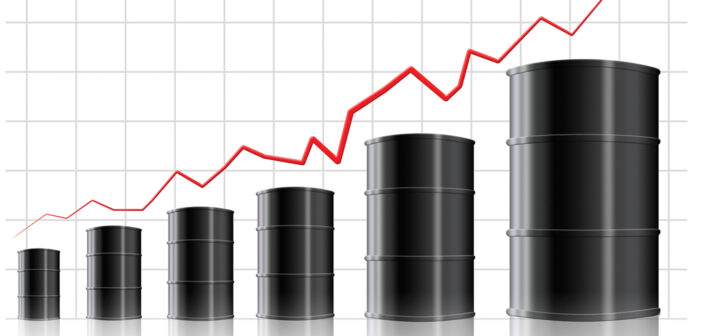Hopefully by the time this is published, the war will be over and peace will prevail in Eastern Europe. At the time of this column’s writing, the conflict is escalating. In addition to the horrific humanitarian crisis, the war threatens substantial harm to the U.S. economy.
Russia is the third largest oil producer in the world, producing approximately 11 million barrels per day. This is roughly the same amount of oil produced by Saudi Arabia and represents about 10% of the world’s supply. The Federal Reserve estimates that a 10% increase in the price of oil only reduces oil demand by 1%. Thus, if Russian oil is blocked from the market due to a trade embargo or other disruption, the global price of oil would have to double for world oil demand to fall by 10%. This means that oil would exceed $200 per barrel and gasoline would average nearly $6 per gallon. A $10 increase in the price of oil increases the price of gasoline by about $0.25 per gallon. In the early weeks of the conflict, on fears of this supply disruption, the price of oil rose to over $100 per barrel, pushing gasoline to nearly $4 per gallon.
This is significant because most post-WWII recessions were preceded by a sharp increase in the price of oil, including the 1973-75, 1980, 1991 and 2007-09 recessions. The spike in energy costs resulting from the conflict threatens to derail the economic recovery from the COVID-19 recession and push the economy into another recession characterized by rising unemployment and inflation, meaning stagflation.
Although rising oil prices are the most visible economic effect of the conflict, there are other serious economic consequences that so far are getting less attention. Russia produces
90% of the world’s industrial grade neon which is used to manufacture lasers and 40% of the world’s palladium, which is used in semiconductors, and other minerals and metals. This threatens to worsen the semiconductor shortage that has slowed the automotive industry. The price of palladium has risen over 50% since the conflict began.
Ukraine and Russia collectively produce a quarter of the world’s wheat supply. Ukraine is known as the “breadbasket of Europe’’ and the conflict threatens to disrupt this. In the first two weeks of the conflict, wheat prices rose by nearly 50% and trading in wheat futures contracts were “limit up” for two days in the first week of March, which means prices were rising so rapidly that trading was temporarily halted. Russia is also the world’s largest exporter of ammonium nitrate fertilizer, which Russia is likely to ban the export of. This will further increase fertilizer prices farmers pay and thus, food prices. Anecdotal evidence from farmers indicates that farmers are seeing their fertilizer cost increase by a factor of three or more.
The world economy is exceedingly complex and interconnected and Russia is a significant participant in it. There are likely more consequences than these that will be felt.














